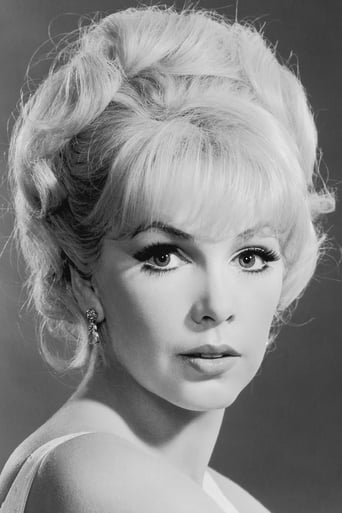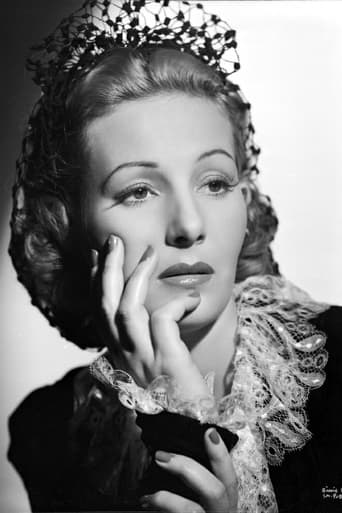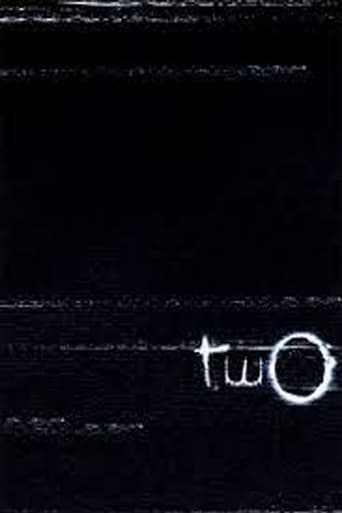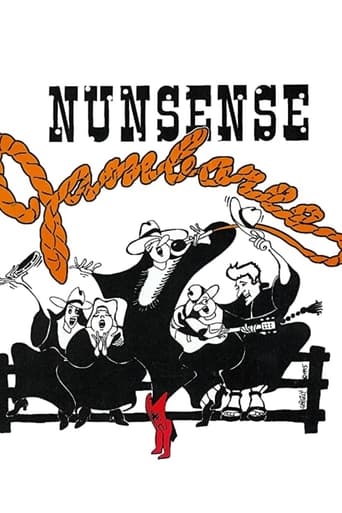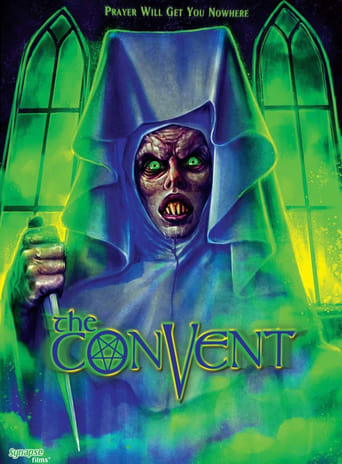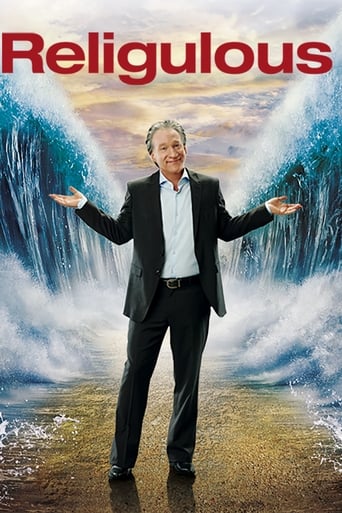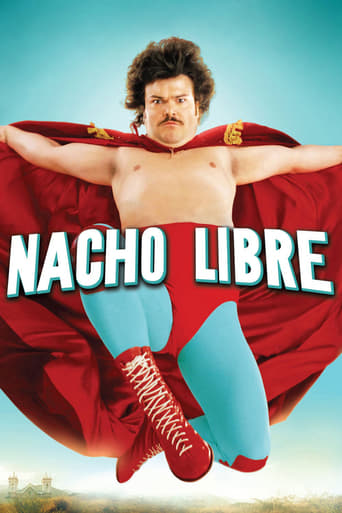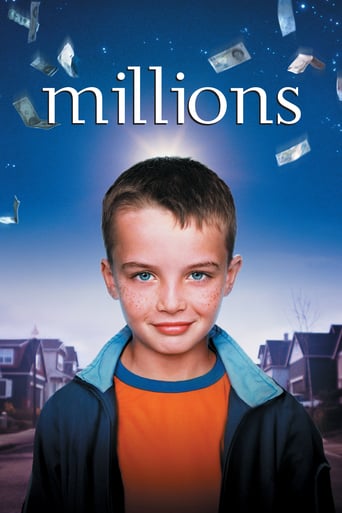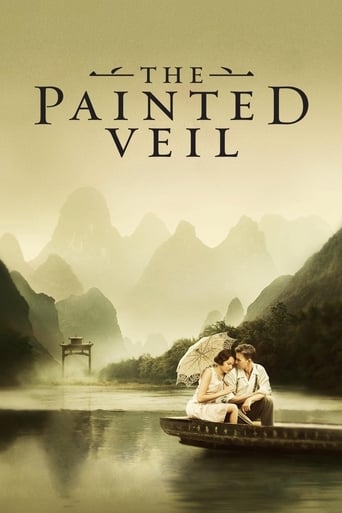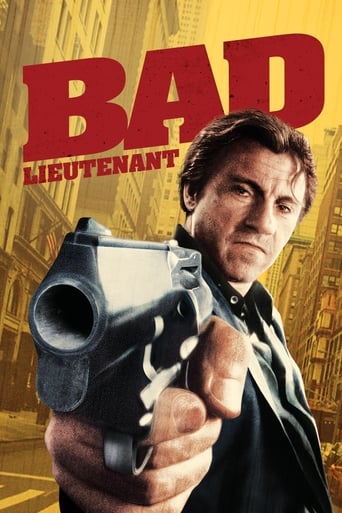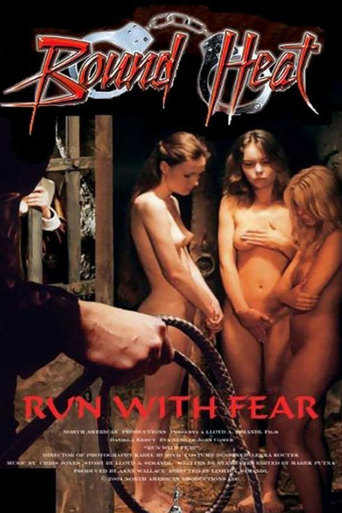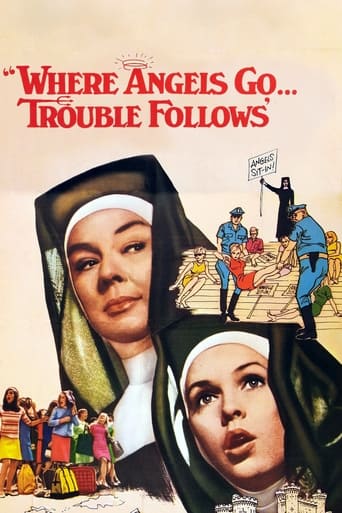
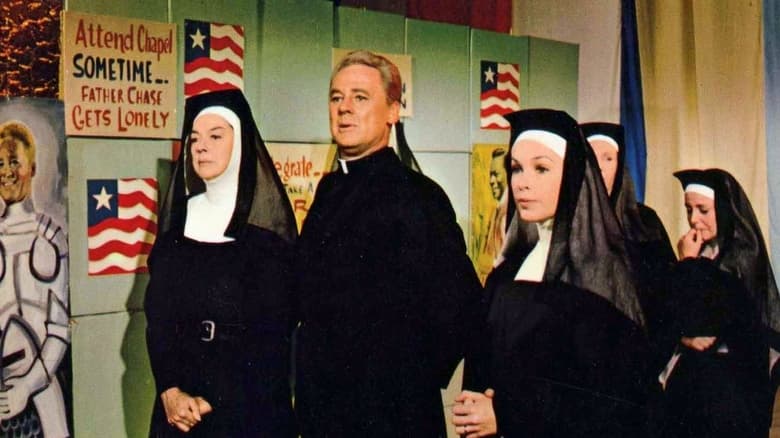
Where Angels Go, Trouble Follows (1968)
Mother Superior of St. Francis Academy is challenged by a modern young nun when they take the girls on a bus trip across the country.
Watch Trailer
Cast


Similar titles
Reviews
If one didn't know how to organize the scenes of a movie, "Where Angels Go, Trouble Follows" could serve as an example of what not to do. Put a road trip in the film and then just plop the scenes down in any order. It's a mess, even with a weak thread to connect the parts. This 1968 sequel to "The Trouble With Angels" of 1966 fails in more ways than direction, plot and screenplay. With the exception of a few of the actresses who play nuns, the acting ranges from ho-hum to horrible. Even with the number of scenarios with big name actors, the film flops. Van Johnson, Robert Taylor, Milton Berle and Arthur Godfrey can't do anything with this script to save the film.This is the first major role that Susan St. James had in her career, but her Rosabelle doesn't have the life and spark of a Mary Clancy (Hayley Mills in the first film). She and Barbara Hunter as Marvel Ann are the two troublemakers in this film, but their characters have no depth. They just get into a scrape here and there, with little between to give them any connectedness. The plot is very goofy in places. Some of the scenes are far out. Why would movie Indians attack their bus? They clearly didn't just drive into the middle of a movie set with a band of Indians attacking a wagon train. They were some distance from the filming when attacked. In the school bus and car wash scene, the first thing one notices is that the bus windows are open – way before they start the bus through the wash. Okay, so Rosabelle isn't very sharp and not at all alert. But, at the end of the bus wash, the two girls laugh it up. Where was the scene of a long delay while the bus dried out, and mother superior's discipline? Indeed, most of the scenarios on the bus journey are incomprehensible. They are heading across country – 3,000 miles, to some sort of rally. So, they stop for a day at an amusement park before they even get out of Pennsylvania? Then, in the Southwest they get the help of a rancher and his six sons, who put on a rodeo show for them. They then put the whole bus up for the night in a palatial ranch house. Of course, we never know what the rally is that the girls are going cross-country to attend. The movie has one short scene of the bus pulling on to the Pennsylvania Turnpike. But most of the driving is on two-lane roads and narrow paved country roads, some of which aren't even lined. By 1968, large portions of the Interstate Highway system were completed across the U.S. And, in those areas where there were no freeways, the major highway and secondary road traffic would be very heavy most of the time. Yet this school bus goes cross-country hardly ever encountering traffic for hundreds of miles. Columbia Studios didn't have sense enough to get some film footage of a school bus driving on regular highways with other traffic. Then, there's Sister George, played by Stella Stevens. Not only is she a constant complainer and blamer (real attributes of a nun serving the Lord), but she is loud, obnoxious, unkind and disrespectful to the mother superior and her fellow sisters. Her role was way overboard and unbelievable. So, when she said something to a couple of the girls about getting something out of being a nun, it didn't resonate as honest or believable to this viewer. I can't imagine what the Columbia Studio people were thinking about this role. Did they think that the lippy, whining, belligerent, liberal and "modern" Sister George would go over with audiences? She didn't with most then, and I doubt she would today.The only reason I give this film four stars – and the reason I stayed with it, was the performances of Rosalind Russell, Mary Wickes, Binnie Barnes and Dolores Sutton as the nuns. They were genuine and lent the only sense of reality to the film. Mary Wickes was superb in her role. But for these fine female performers and a few witty lines, there's nothing to recommend this film. At the end, this movie seemed to have a message about religious orders entering more into the world. Mother superior and the other nuns appear in less formal habits – with skirts and veils in the place of full covering habits. Many orders did become more "modern" and worldly over the next few decades. At the same time, the number of women in religious orders took a nosedive. Many orders are drying. They have given up, sold or closed the hospitals, schools, orphanages and other things they built and ran for decades. They no longer provide the bulk of the teachers in Catholic schools. Yet, just before the end of 20th century, there began a renewed interest by young women in becoming nuns. Some existing and some new orders have been flourishing the past few decades. Those that are growing wear habits and have regimens of prayer and devotion with work. Some growing orders are in Pennsylvania, Michigan, Tennessee, Missouri, Nebraska, Arizona, California and other states. Here are a couple of the few funny lines in this movie. Sister George, "Right now, reverend mother wouldn't give either one of you a free pass to a disaster."Mother Superior, "I can't tell you how grateful we are for the new bus, Mr. Clancy. It's very generous of you." Clancy, "It's my pleasure, reverend mother and after all, it is a tax deduction." Mother, "Yes, I know. Isn't it wonderful how our tax structure brings out the best in people?" Clancy, "That's very good, reverend mother."
This raggedly produced sequel to "The Trouble with Angels" (1966) focuses on returning conservative "Mother Superior" Rosalind Russell's clash with younger, liberal Stella Stevens (as Sister George). Driver Mary Wickes (as Sister Clarissa), Binnie Barnes (as Sister Celestine), and Dolores Sutton (as Sister Rose Marie) also return. The nuns take a cross country bus trip, from Pennsylvania to California, which provides some lovely locations. Like the original film, we get a "hip" for the sixties Catholic Church.Prurient fun can be had in watching the convent women dancing at a naughty all-girl pajama party, swingin' at a Catholic boys' school, and shortening their skirts. The mischievous "girls" taking center stage are butch Susan Saint James (as Rosabelle) and blonde Barbara Hunter (as Marvel Ann). Two sexy young "Peyton Place" "hunks" appear - first, motorcycle gang leader Michael Christian trades sharp innuendo with Ms. Stevens, then blond ranch-hand John Findlater arouses the girls at a swimsuit party.There were few, if any retakes - note Stevens brushing a fly away from her face, and the falling chair - in fact, the movie plays like four episodes of a TV series; and it was likely, at some point, considered as such. But, it is fairly good fun to watch. Unseen pop duo Tommy Boyce and Bobby Hart provide the soundtrack theme. You also get old-timers Milton Berle, Robert Taylor (his last appearance), Van Johnson, and Arthur Godfrey showing they're part of the 1960s effort to merge the "In Crowd" with Catholicism.***** Where Angels Go Trouble Follows! (4/3/68) James Neilson ~ Rosalind Russell, Stella Stevens, Susan Saint James, Barbara Hunter
After a series of misadventures on the road with a broken down bus and screaming girl students, ROSALIND RUSSELL toward the end of the film states: "It proved to be a wonderful experience." That she says it with so much conviction is a testament to her acting skill--because it's another matter for the audience.This is one of those strained comedies where a series of seemingly disconnected incidents on the road are supposed to be hilarious, but are more likely to provide just a few chuckles. Most enjoyable of all is the scene where two of the more rebellious girls are asked to wash the bus and instead, send it through the car-washer apparatus with disastrous results. Most of the other attempts at humor are less successful and even more improbable, especially the sequence involving an Indian chase with a cameo by Milton Berle as a film director wearing an eye patch (a la Raoul Walsh). STELLA STEVENS is the modern nun who has a run-in with some knife wielding bikers and is able to keep her cool and seem impervious to their threats. The dialog in this scene has to be heard to be believed. Let's just say it is about as far removed from reality as the script gets, and that's pretty far.ROSALIND RUSSELL is stern and amusing as the head nun, ready with a quip whenever circumstances demand it. STELLA STEVENS, BINNIE BARNES and MARY WICKES are capable as the other sisters, but SUSAN ST. JAMES and a few of the other girls in the cast have irritating roles.One of the best features: Lalo Schifrin's bouncy background score, but the whole film reflects the '60s to such an extent that it appears dated in the extreme. It's the sort of film that must have seemed dated even in '68.Summing up: The only surprises were nice cameos by Van Johnson and Robert Taylor, both giving amiable performances.
I,have this movie and the trouble with angels, it brings back so many memories i lived in that castle for 5 years and spent most of my childhood there.I left right before they started to film it. It was made in ambler pa and is still there it was a home for children that were placed there for many reasons some from broken homes and under other reason i have gone back once and since the movies there have been many changes no one lives in the castle anymore it it use for office but really hasn't changed much except they have built a new chapel which was in the castle and some of the girls live there on the third floor i do remember swimming in the lake there it was our swimming spot at that time. but i watch it a few times a years with my grandchildren wow what a long time but i have so many memories good and bad



